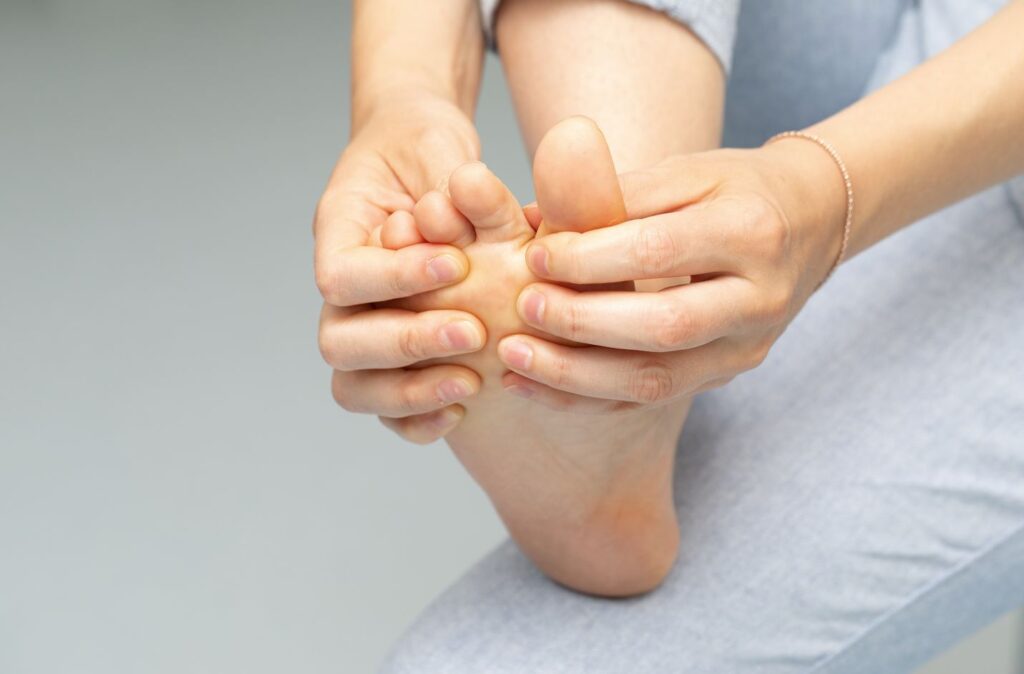Share Post
Exploring the Genetic Factors: Is Hammertoe Hereditary?
Is Hammertoe Hereditary? That is a question many asking, but Having hammertoes makes you acutely aware of the things that other people take for granted, such as being able to wear any pair of shoes or being able to walk without getting a blister. If you allow this toe deformity to progress unchecked, it may leave you hobbling.
Is Hammertoe Hereditary?
Hammertoe can have both hereditary and non-hereditary causes.

Hereditary Factors:
Is Hammertoe Hereditary? Well, Hammertoe can run in families, suggesting a genetic predisposition. If you have close relatives, such as parents or grandparents, who have had hammertoe, you may be at a higher risk of developing it yourself. While the specific genes responsible for hammertoe haven’t been conclusively identified, family history can be a contributing factor.
Hammertoes in and of themselves are not inherited, but the foot type that leads to them is. You are at danger of getting one if you have ever observed your parents’ or grandparents’ toes sticking out. This is a crucial point to understand because it will allow you to take action to stop a hammertoe from forming if you catch your toes buckling early. The mechanics and general stability of your foot, not your shoes, are what typically create hammer toes.
Non-Hereditary Factors:
Hammertoe can also develop due to various non-hereditary factors, including:
Foot Structure: Individuals with certain foot structures, such as high arches or a second toe longer than the first (known as Morton’s toe), may be more prone to developing hammertoe.
Footwear: Wearing tight, ill-fitting shoes, especially those with narrow toe boxes or high heels, can increase the risk of hammertoe by putting pressure on the toes and forcing them into an unnatural position. See also Shoes for Hammertoes.
Injury or Trauma: Injuries to the toe or foot, such as stubbing the toe or dropping a heavy object on it, can lead to hammertoe.
Muscle and Ligament Imbalances: Imbalances in the muscles and ligaments that control toe movement can contribute to the development of hammertoe.
Age: Hammertoe is more common in older adults as the ligaments and tendons in the feet may lose their elasticity and strength over time.
Medical Conditions: Certain medical conditions, such as arthritis and diabetes, can increase the risk of hammertoe.
Occupational Factors: Jobs that require prolonged periods of standing or walking can increase the risk of developing foot problems, including hammertoe.
It’s important to note that while genetics can play a role in hammertoe development, many cases are preventable or manageable through lifestyle changes and proper footwear choices. Is Hammertoe Hereditary? If you have a family history of hammertoe or are concerned about your risk, it’s a good idea to take preventive measures, such as wearing comfortable shoes with adequate toe room, practicing foot exercises, and seeking medical attention if you notice any early signs or symptoms of hammertoe.
You may also find this blog article interesting: Is Foot Fungus Contagious
A visit to Feldman & Leavitt Foot And Ankle Specialists will CLEARLY define all available patient options.
As a general rule, procedures are performed on an outpatient basis in an Alberta Health Services (AHS) approve Surgical Center or in a Hospital. Surgical procedural costs are covered by AHS or the patient may opt for private surgery to avoid a waiting time.

